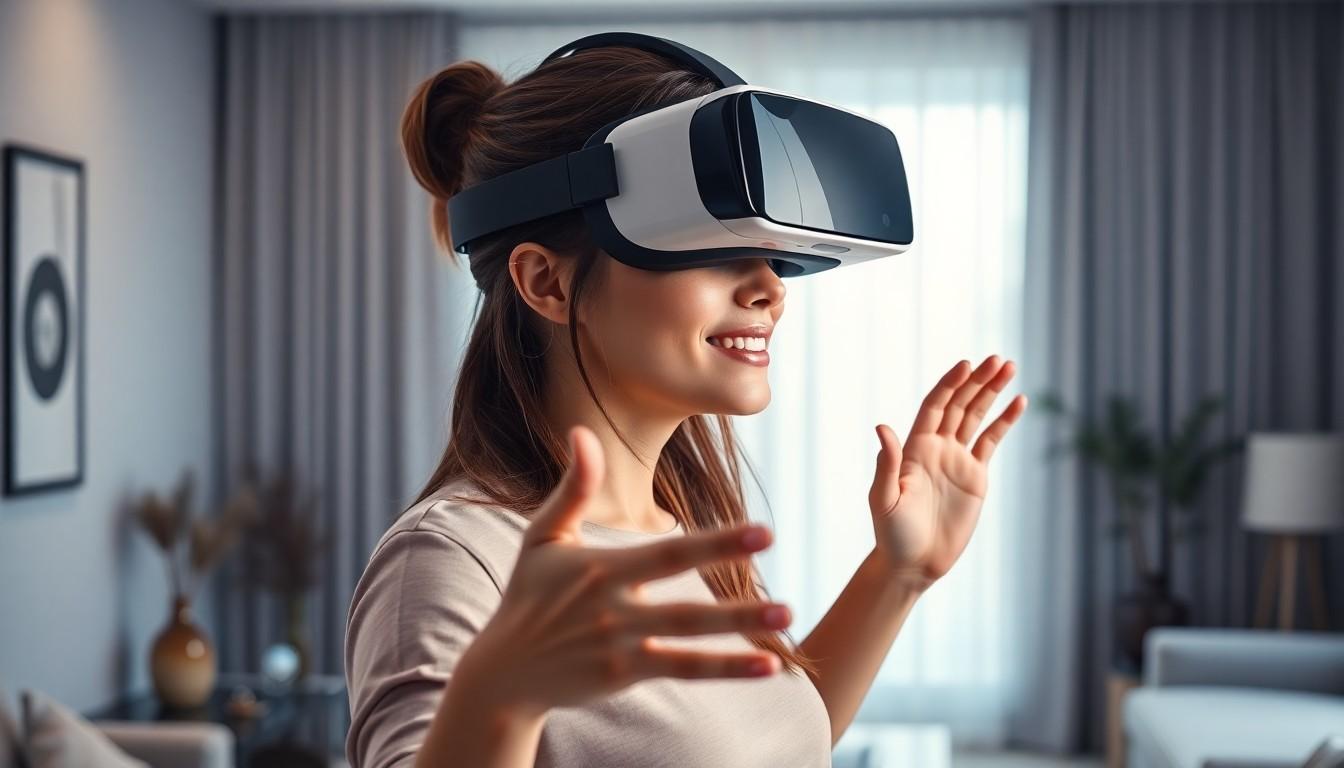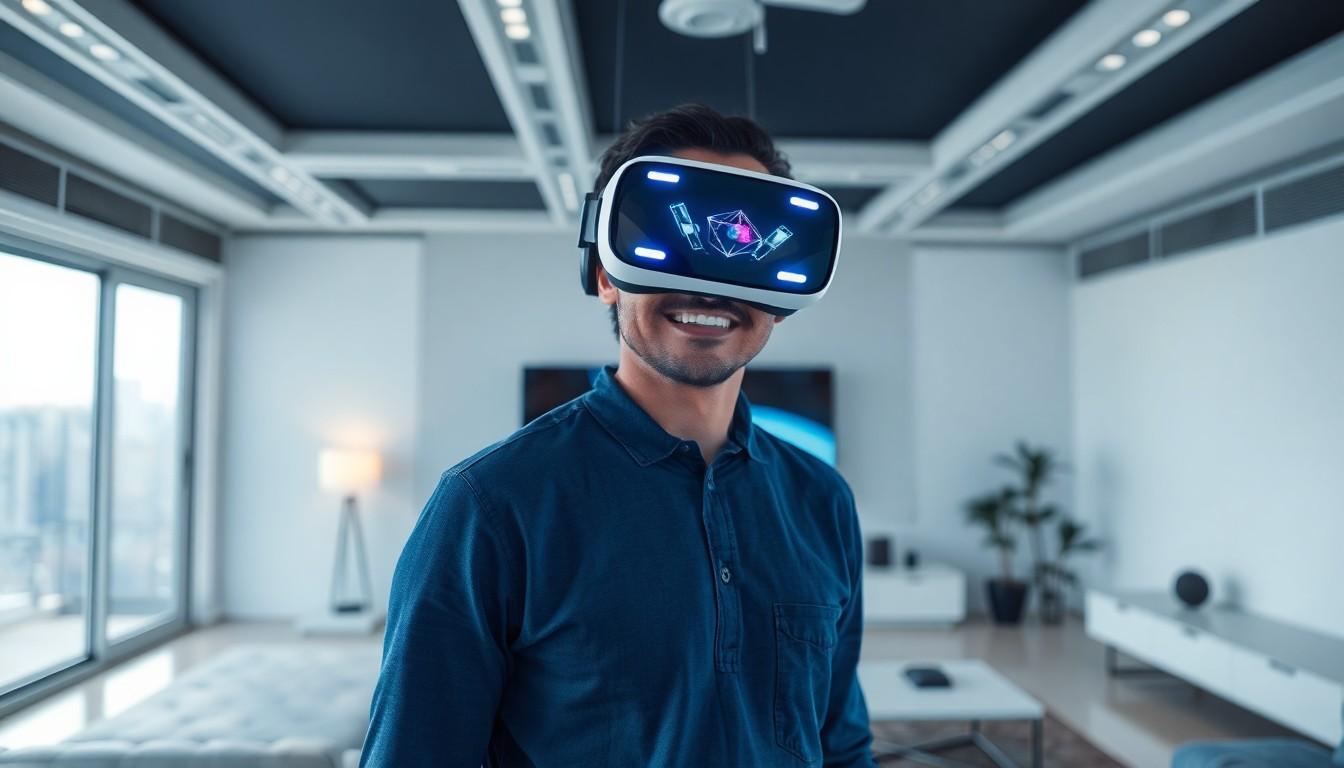Phone:
(701)814-6992
Physical address:
6296 Donnelly Plaza
Ratkeville, Bahamas.

Imagine slipping on a pair of goggles that transport you to a world where unicorns roam free and gravity is merely a suggestion. Virtual reality headsets do just that, turning the ordinary into the extraordinary. But how do these magical devices work their wonders?
At first glance, it might seem like sorcery, but it’s all about technology. These headsets create immersive experiences by tricking the brain into believing it’s somewhere else. With sensors, screens, and a sprinkle of digital wizardry, they unleash an adventure that’s as close to teleportation as one can get without a sci-fi movie plot. Buckle up as we dive into the fascinating mechanics behind virtual reality headsets and discover how they transform pixels into experiences that’ll leave you questioning reality itself.
Virtual reality technology creates immersive experiences by combining several key components. First, displays generate images in high resolution, delivering lifelike visuals. Next, sensors track head and hand movements, allowing users to interact naturally with the virtual environment. Additionally, audio systems produce spatial sound, enhancing the feeling of presence in these digital worlds.
Software plays an essential role in translating user actions into corresponding responses in the virtual space. Engineered to respond quickly, this software ensures a seamless experience. Latency must remain low to prevent disorientation, with a common target of less than 20 milliseconds. High frame rates also contribute to fluid motion, further enhancing immersion.
Different types of headsets exist, each designed for specific applications. Standalone devices operate without external hardware, providing convenience and portability. Tethered headsets deliver higher performance by connecting to powerful computers or consoles, making them ideal for complex gaming and simulations. Mobile VR headsets leverage smartphones, offering a more accessible option for casual users.
Many industries benefit from virtual reality technology. Education and training programs utilize VR for simulations, enabling safe learning environments. Healthcare professionals use VR for therapy and surgical training, improving patient outcomes through guided experiences. Additionally, architecture and design sectors employ VR to visualize projects before construction, allowing for better stakeholder engagement.
As this technology advances, improvements in display resolution and field of view continue to emerge. Innovations in haptic feedback also enhance the sense of touch, making interactions more intuitive. With ongoing development, virtual reality technology expands its reach, offering richer and more diverse experiences.

Virtual reality headsets operate through a combination of advanced technology components that create immersive experiences. These devices transport users into digitally constructed environments, enabling interaction and exploration.
Key components include high-resolution displays, sensors, and audio systems. High-resolution displays, typically OLED or LCD, ensure visuals are crisp and vibrant, enhancing realism. Sensors track head movements with precision, allowing for seamless navigation within virtual spaces. Audio systems create spatial sound, enriching the user’s experience through directional audio cues. Together, these elements form a cohesive system that simulates reality effectively. Each component plays a distinct role in delivering an engaging virtual experience.
Sensors significantly enhance immersion by tracking movements in real time. Gyroscopes and accelerometers measure orientation and motion, ensuring the virtual environment responds fluidly to physical changes. These sensors detect subtle shifts in the user’s position, creating the sensation of being fully present in the digital world. Additionally, external tracking systems, like base stations, further refine motion accuracy. The combination of these technologies eliminates lag, creating a seamless interaction between the user and the virtual environment. Such responsiveness deepens the sense of immersion, transforming how users engage with content.
Virtual reality headsets come in various types, each suited for different applications and user experiences. Understanding these categories highlights how the technology meets diverse needs.
Tethered headsets connect directly to a computer or gaming console, relying on external hardware for processing power. These devices typically offer enhanced graphics and high-fidelity audio, ensuring a more immersive experience. The reliance on cables can limit movement, yet it often compensates with superior performance. Popular models include the Oculus Rift and HTC Vive, widely recognized for their realism and detail. Users enjoy extensive libraries of games and applications, showcasing advanced capabilities in virtual environments. Tethered headsets excel in providing depth and quality, making them a preferred choice for serious gamers and professionals.
Standalone headsets function independently, housing all necessary hardware within the unit itself. These devices don’t require external connections, allowing for greater mobility and convenience. Design simplicity appeals to casual users seeking straightforward virtual experiences. Standalone options, like the Oculus Quest 2, offer impressive graphics, despite integrating processing power in a compact frame. Many standalone headsets support an extensive catalog of applications, from gaming to fitness. With ease of use and portability, these devices cater to a broad audience interested in exploring virtual reality without the complexity of additional hardware.
Virtual reality finds extensive applications across various sectors, enhancing user experiences and engagement. Its versatility demonstrates how technology shapes interactions in multiple fields.
Gaming takes center stage in virtual reality applications. Players immerse themselves in dynamic worlds, experiencing adventures like never before. Popular titles, such as Beat Saber and Half-Life: Alyx, showcase how virtual reality transforms traditional gaming into engaging experiences. Users interact directly with the environment, manipulating objects and making decisions that influence gameplay. This active participation heightens immersion, creating a sense of presence. Additionally, VR facilitates social gaming, connecting friends through shared experiences in virtual spaces. Events like VR concerts also rise in popularity, offering unique entertainment formats that reach broader audiences.
Education increasingly benefits from virtual reality, enhancing learning environments. VR creates simulations that allow students to engage in hands-on experiences without real-world risks. For instance, medical students can practice surgeries in virtual operating rooms using realistic scenarios. Similarly, organizations utilize VR for employee training, presenting complex tasks in safe environments. Engaged learners retain information more effectively, thanks to immersive scenarios. Research indicates that 80% of students retain information better through experiential learning. Virtual reality platforms facilitate diverse subjects, from history to science, making lessons captivating and interactive.
Virtual reality headsets represent a remarkable fusion of technology and imagination. They’ve revolutionized how users engage with digital content by offering immersive experiences that feel incredibly real. As advancements continue in display technology and tracking precision, the potential for VR expands across various sectors.
From gaming to education and healthcare, these headsets provide innovative solutions that enhance learning and entertainment. The future promises even more exciting developments that will further blur the lines between reality and the virtual world. With each improvement, VR is set to become an integral part of everyday life, transforming how people interact with their environments and each other.